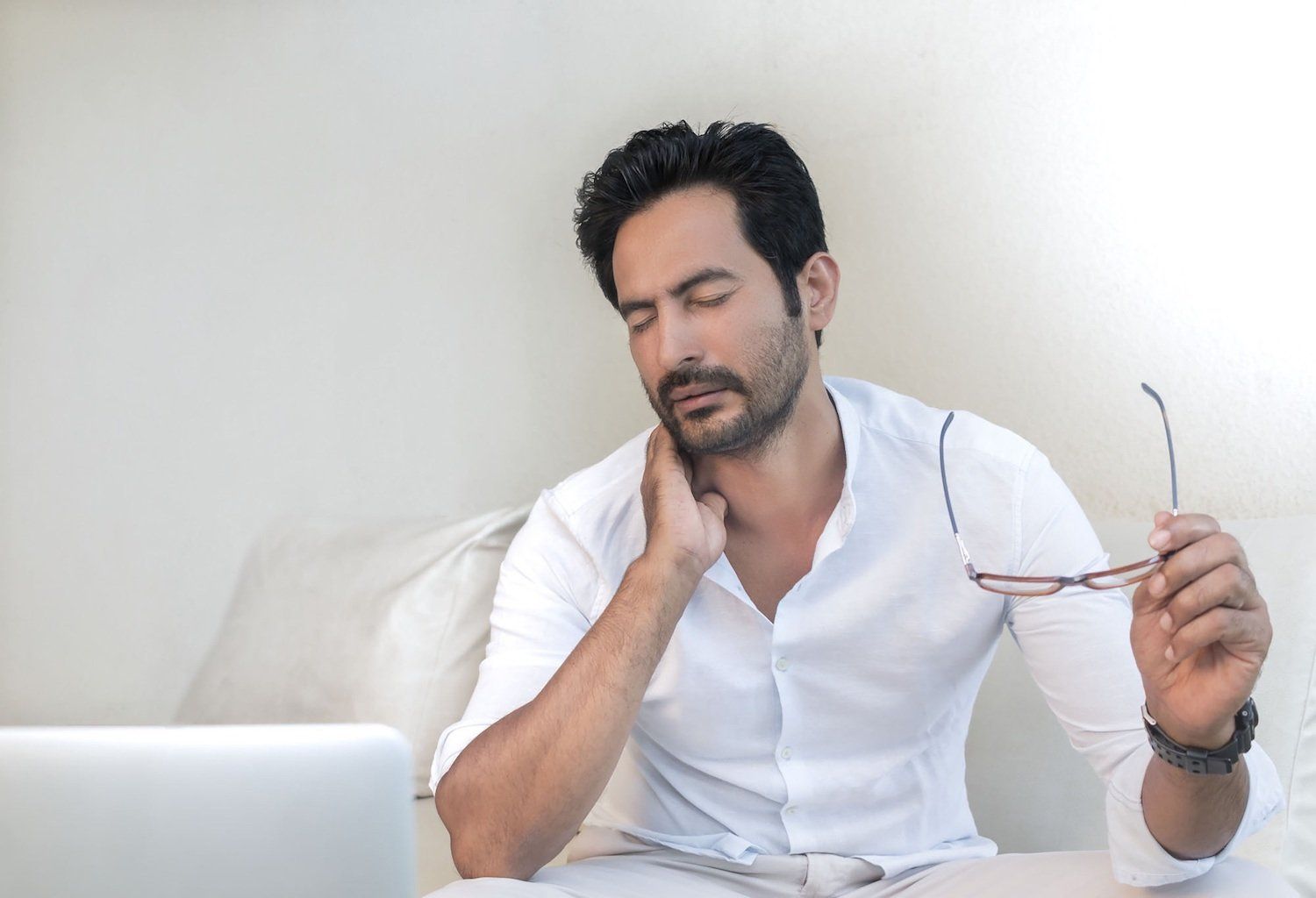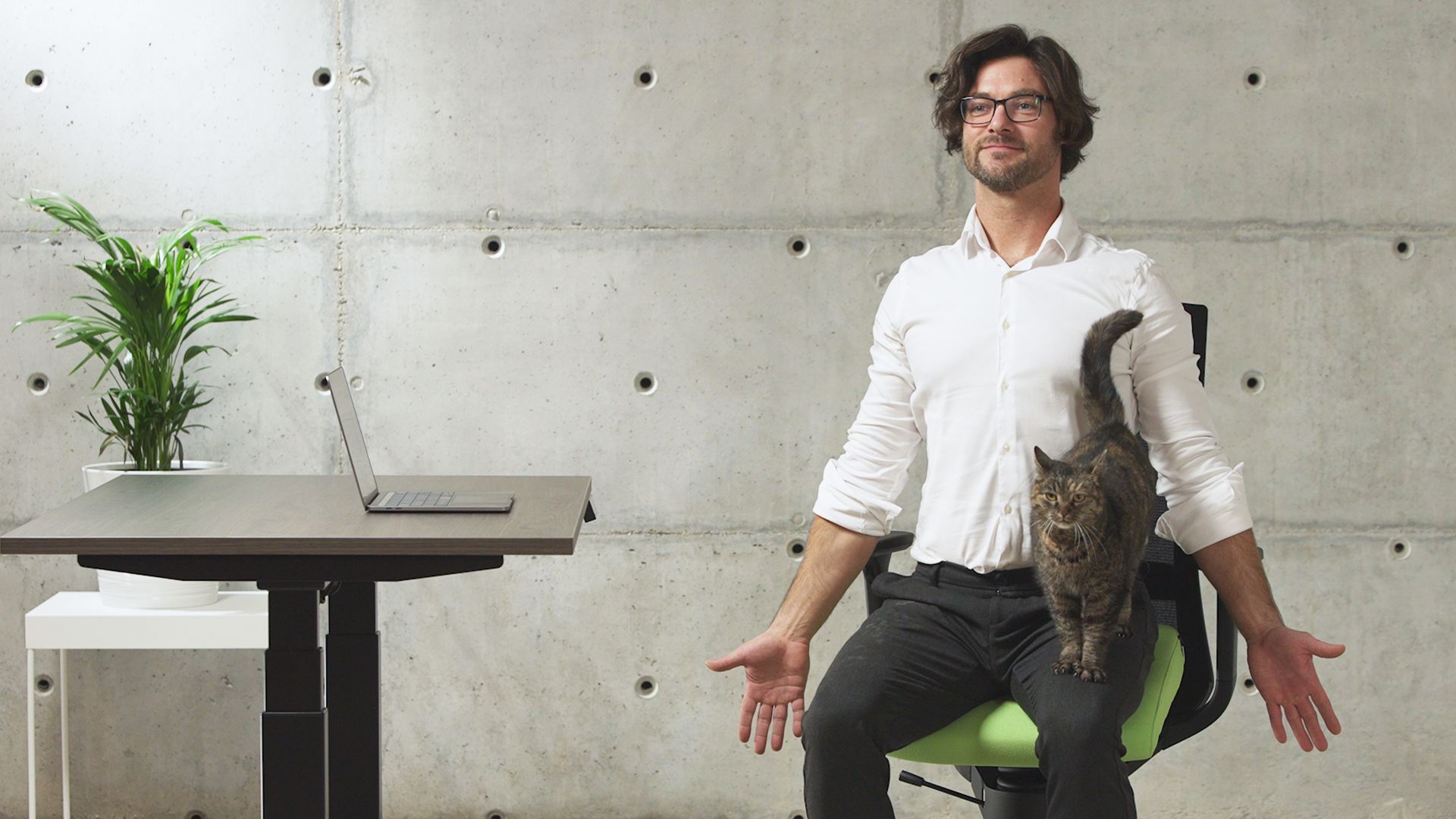
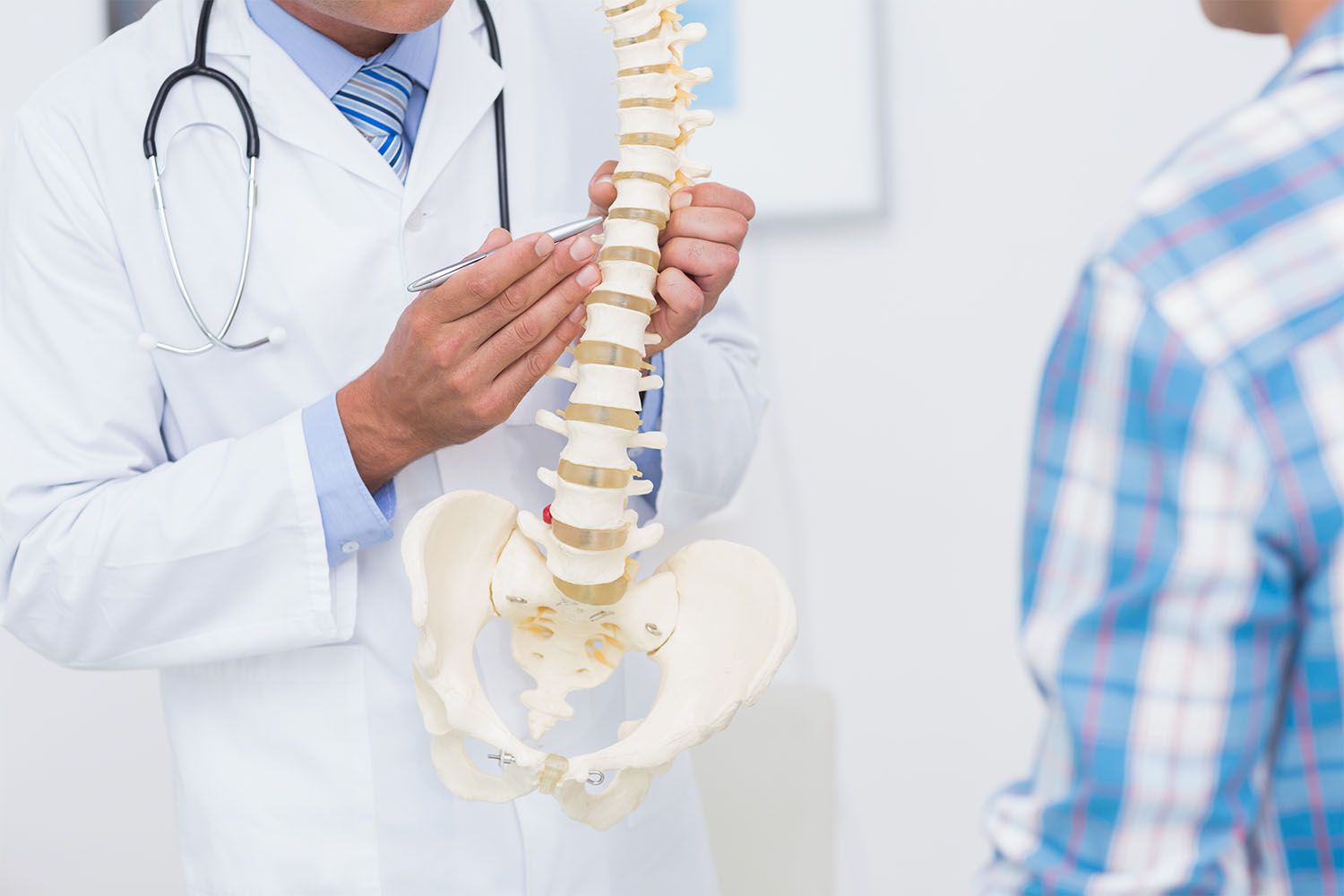
Study Report: Using a Therapeutic Chair More Beneficial than Physical Therapy
Did you know that 40% of adults suffer from back pain?
At Adaptic, we have spent 16 years working on ways to help them. We have sought and tested the ideal therapeutic chair design for years, and finally succeeded. Our customers now tell us Adaptic chairs genuinely help relieve their pain.
My Adaptic chair found me at just the right moment. My office back was screaming for a radical solution. After many years getting bent out of shape on standard office chairs, the right support was definitely needed. So I took the decision, and it turned out to be one of the best calls I've made recently.
Romana Junková(Charles University in Prague 2nd School of Medicine, Medical Research Department, Motol University Hospital | Prague, Czech Republic)
Feel free to read more happy customers’ testimonials.
But we also wanted scientific support for our results, which is why we collaborated with a team of physical therapists on a 300-patient study examining the results of using an Adaptic chair.
We were both elated and troubled by the results:
Yes, Adaptic chairs really work – even better than rehab, it turns out. In our study, 92% of patients maintained healthy seated posture on an Adaptic chair, compared to just 39% on a typical ergonomic chair. The remaining 61% of ergonomic chair users were inflicting spinal overload on themselves, suggesting these chairs are not enough.
Therapeutic vs. Ergonomic Chair: Not the Same
Our study compared “therapeutic” chairs to “ergonomic” ones. What’s the difference?
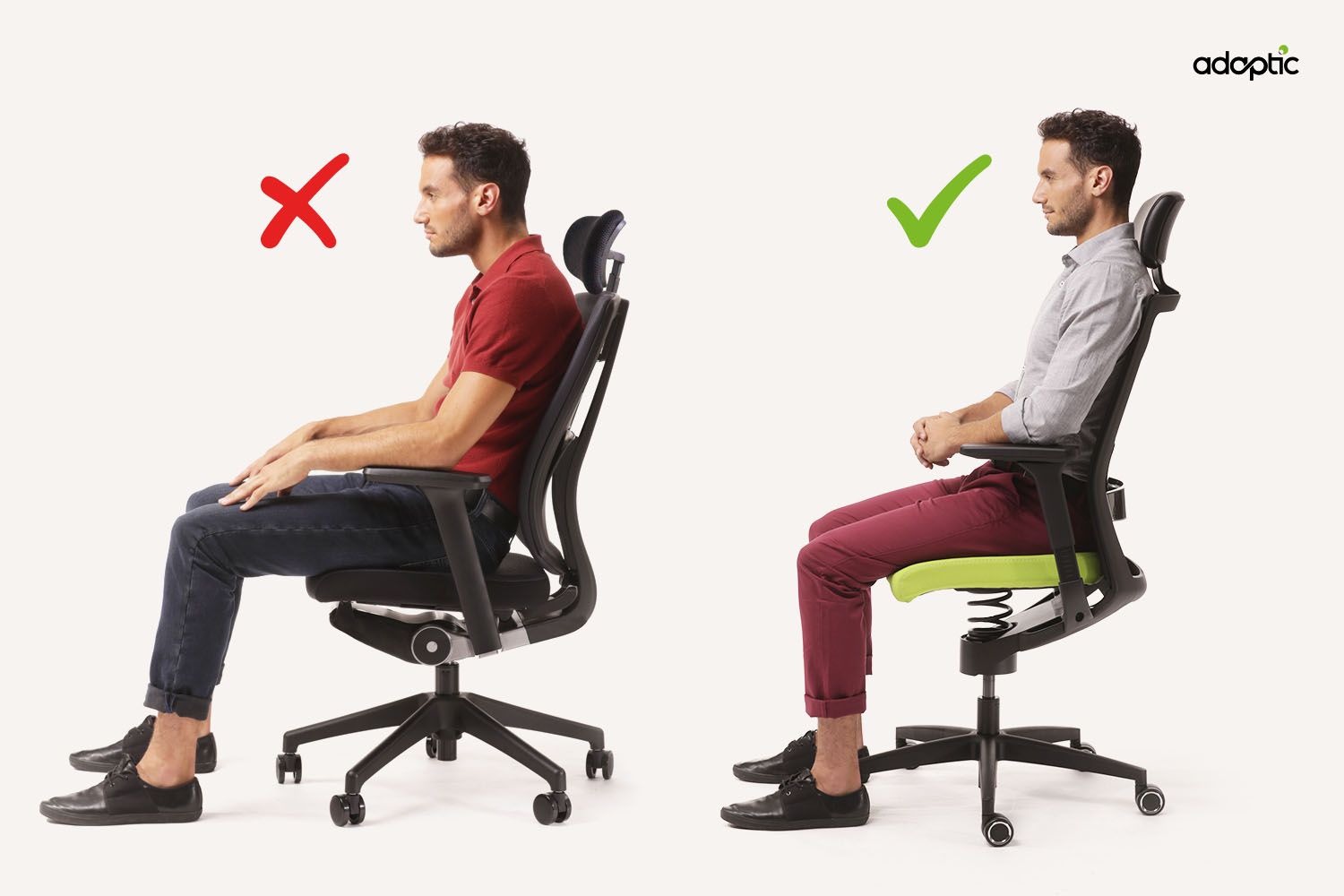
Ergonomic Chair
- Your usual adjustable office chair
- Passively supports the body
- Only postural (static) muscles are active when sitting
- These muscles eventually tire, leading to slumping into unhealthy postures
- The chair cannot stabilize the torso to properly support the spine, which overloads as a result
Therapeutic Chair
- Adjustable office chair with tilting seat
- Activates deep core stabilizing system muscles
- Activates both postural (static) and phasic (locomotive) muscles
- Muscles are exercised and naturally maintain a healthy seated posture
- Tilting seat properly stabilizes the torso and relieves spinal and lumbar load
More on the differences between these chair types can be found in this video:
Not All Therapeutic Chairs Are Created Equal
A tilting seat is, by itself, not enough to achieve the results seen in this study. The chair also needs:
- Proper balance and design of the tilting seat
- Back- and armrests independent of the seat
These provide a firm support to lean against and relax.
Now, on to the study.
Study Objective 1: Rehabilitation and Exercise Ball vs. Therapeutic Chair
The study was performed in two parts. In the first, we compared the effects on the human body of rehabilitation, an exercise ball, and a therapeutic chair. Investigators followed a total of 200 patients complaining of back pain, who were divided into 4 equal-sized groups:
- 50 patients used an Adaptic tilting-seat chair in their office work
- 50 patients used an exercise ball
- 50 patients exercised regularly with physical therapist supervision
- 50 patients in the control group did not change their prior habits
Lack of Exercise Leads to Muscle Atrophy
Atrophy of the spinal musculature is a frequent source of back pain. We thus examined the growth of deep core stabilizing muscle mass across our study groups. Investigators measured deep core stabilizing muscle mass on a total of 3 visits: at study start, after 6 months, and after 12 months.
Objective 1 Results
| Participants | Muscle growth at 6 months | Muscle growth at 12 months |
| Control group | -1 to 0 mm | -2 to 0 mm |
| Outpatient rehabilitation | 0 to 0.5 mm | -1 to 2 mm |
| Exercise ball | 0 to 2.5 mm | -5 to 4 mm |
| Adaptic therapeutic chair | 1.5 to 3 mm | 3 to 6 mm |
Note: Table shows range of growth / decline in muscle thickness. The values shown are the min-max range of the sample.
The control group suffered muscle atrophy ex inactivitatem at both 6 and 12 months.
Rehabilitation Effects Temporary Due to Lack of Motivation
Rehabilitation and exercise balls helped patients over the first 6 months. These groups showed a moderate increase in deep core stabilizing muscle mass, up to 2.5 mm for the exercise ball. At the 12-month visit however, muscle mass had decreased again. In some cases, the patients had less muscle than at study start.
Adaptic co-founder Jaroslav Kotula believes this to be due to loss of motivation:
While patients have acute pain, they are motivated to exercise. Over time though, regular exercise or use of the gym ball become tiresome. As motivation to keep exercising deteriorates, so do the results.
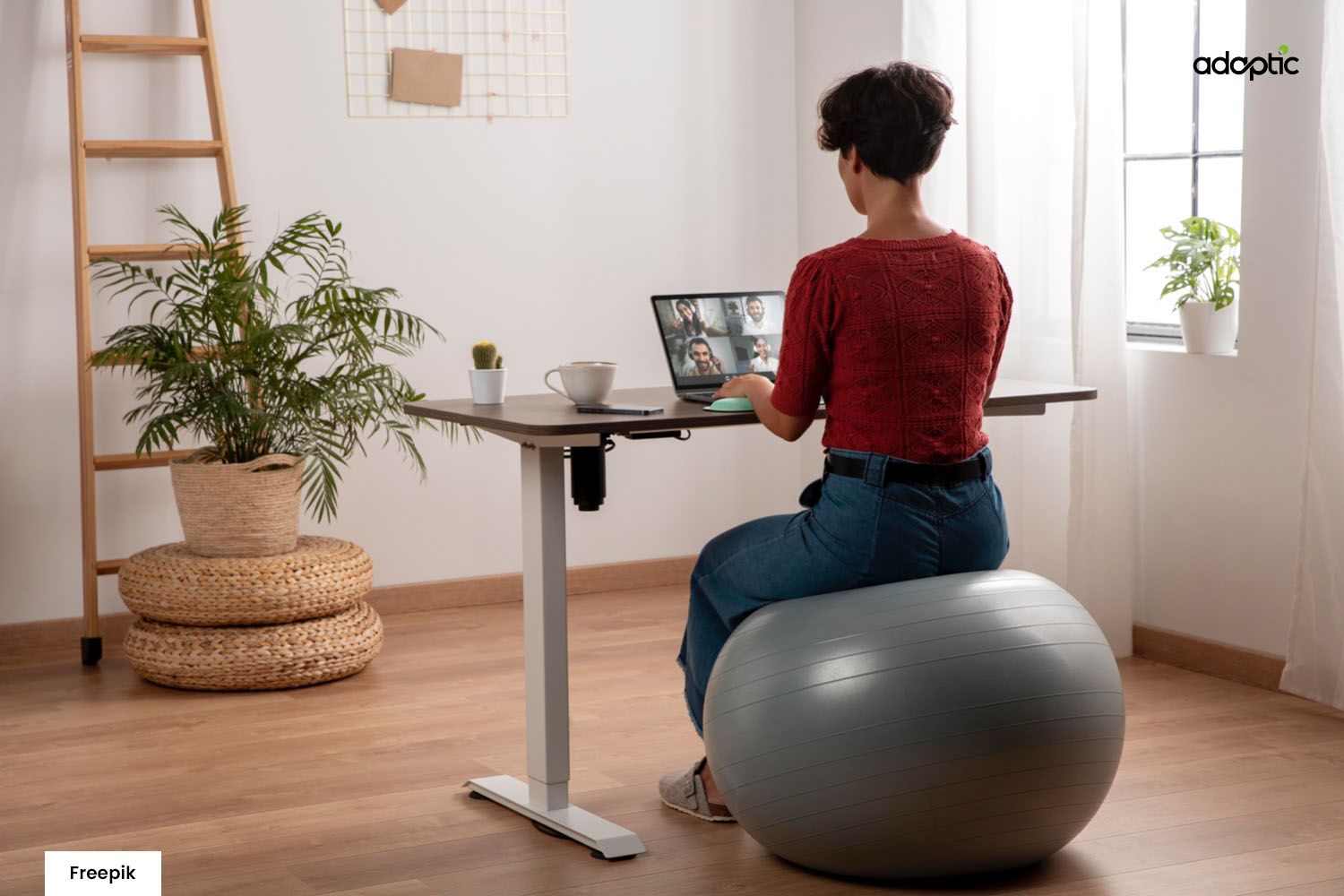
Adaptic Chairs Offer Long-Term Relief. All You Need to Do Is Sit
How did Adaptic therapeutic chairs fare? Patients who used them in their office work showed increased muscle mass at both 6 and 12 months. After a year sitting on a tilting seat, investigators found muscles thicker by 3 to 6 mm compared to study start.
Patients using Adaptic chairs not only had the best results, but importantly were able to maintain them and achieve lasting relief.
Jaroslav Kotula says therapeutic chairs are easiest available form of “exercise”. You simply need to sit on the right chair.
You don’t need motivation to sit on a chair. You simply use it for your daily office work and think nothing of it. The tilting seat allows you to naturally activate deep core stabilizing muscles, which stabilizes the torso in a straight posture, relieves spinal load, and prevents muscle imbalance when seated.
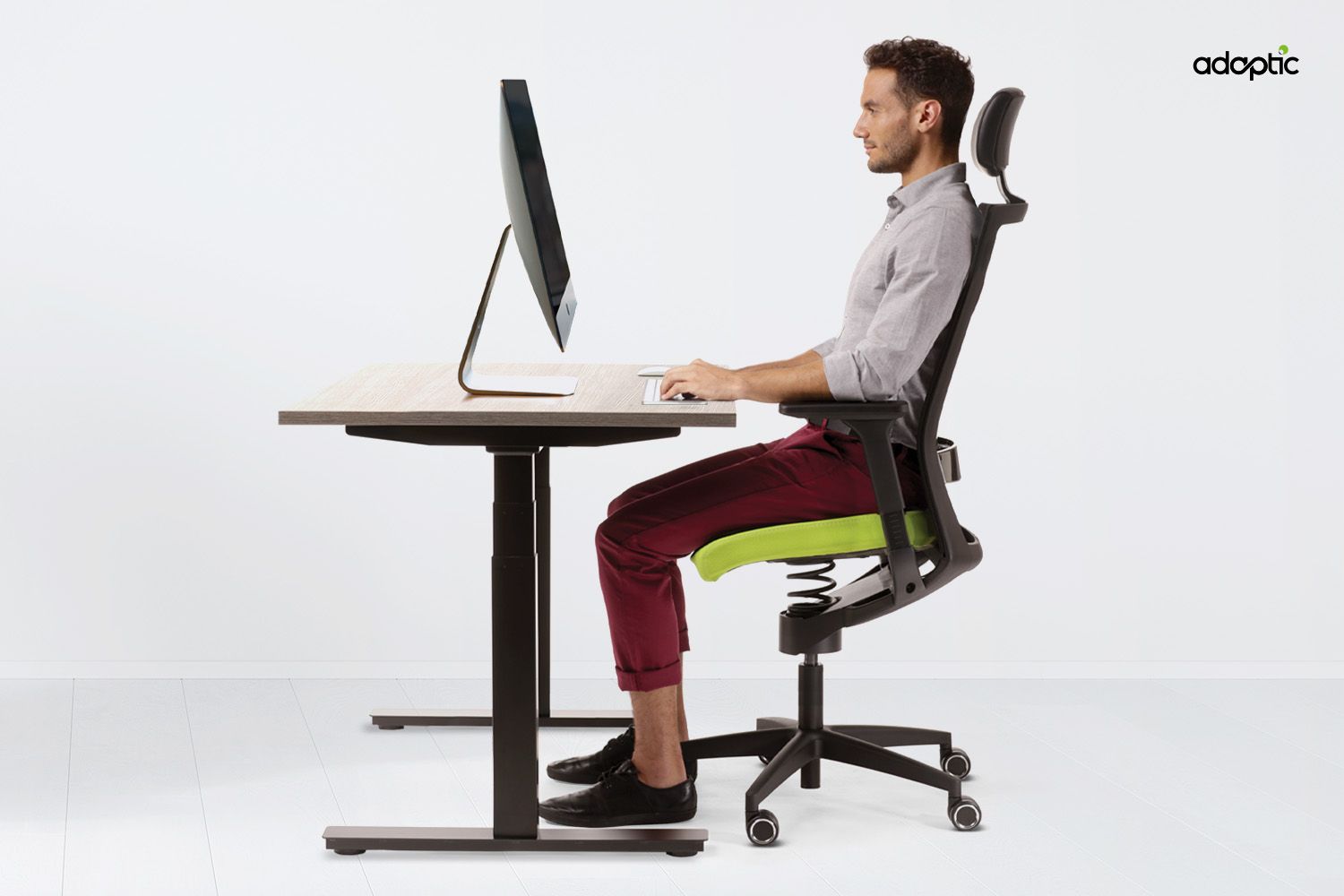
Study Objective 2: Therapeutic vs. Ergonomic Chair
In the second part of our study, we examined how patients sit on ergonomic and therapeutic chairs. A good chair doesn’t help if you maintain a poor posture.
Back health crucially depends on two things:
- Straight standing posture, as well as straight seated posture if one has to sit
- Regular exercise
This is what the human body evolved for. Sitting or standing straight keeps vertebrae in the proper alignment and pressure is distributed equally across spinal discs, keeping the spine from overloading. Moving around also improves nutrient flow to the discs.
Most people cannot maintain a straight posture when working all day at a computer. Typically, people eventually hunch over, push the head forward, and bend the back in a C-shape. This posture is hardly optimal for the vertebrae: The vertebral bodies tilt and over-compress the discs, increasing risk of herniation. Pushing the head forward also overloads the cervical spine, frequently causing neck pain.

2 Out of 4 Postures Overload the Spine
In this part of the study, investigators followed a total of 100 office workers over a period of 3 months:
- 50 used an Adaptic therapeutic chair
- 50 used a generic ergonomic chair
Investigators took photos of the patients in the morning, midday, and end of shift, noting each time which of 4 basic categories their posture most resembled. The first two postures are natural and healthy for the back, while the last two tend to cause pain and may lead to serious conditions such as disc herniation.
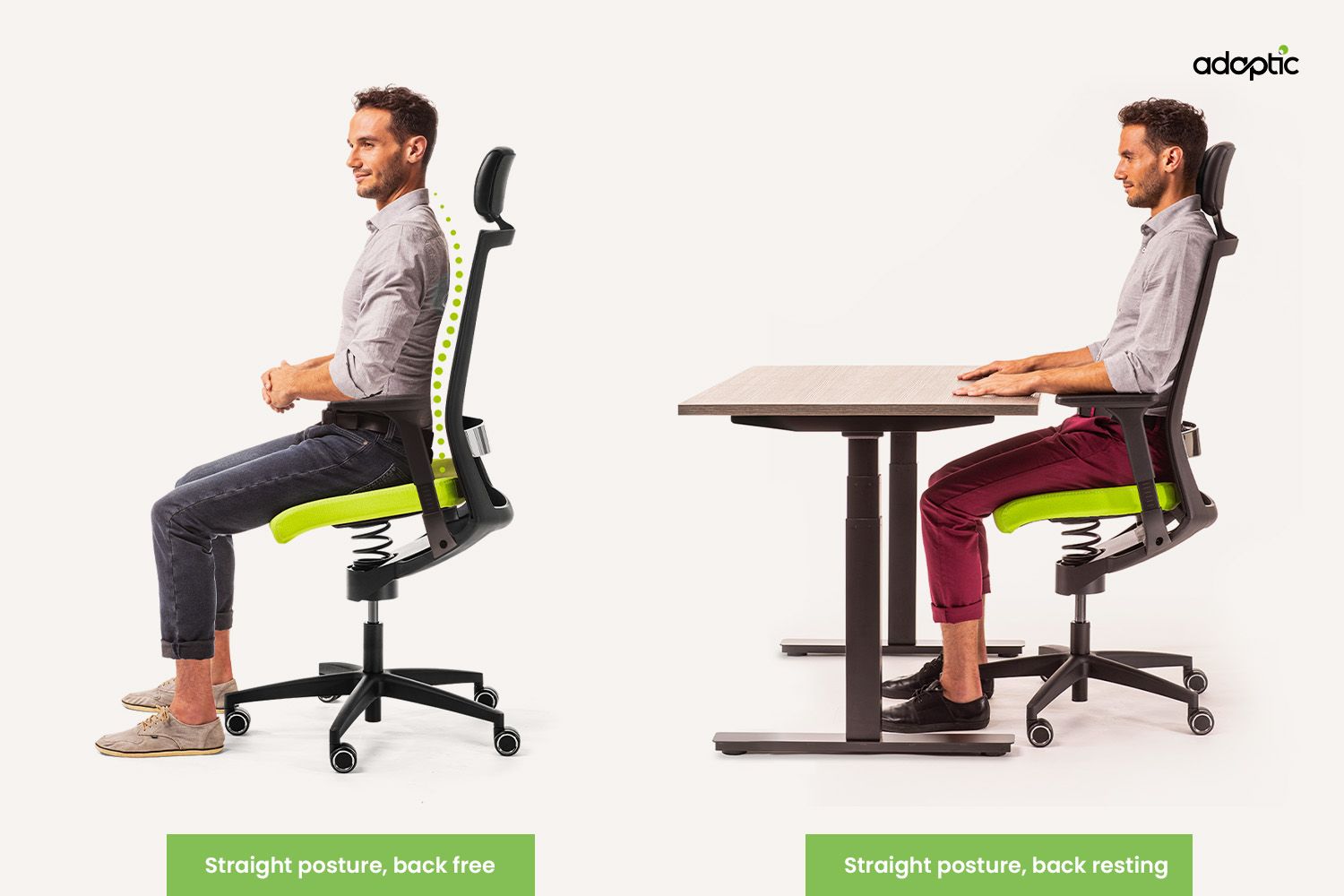
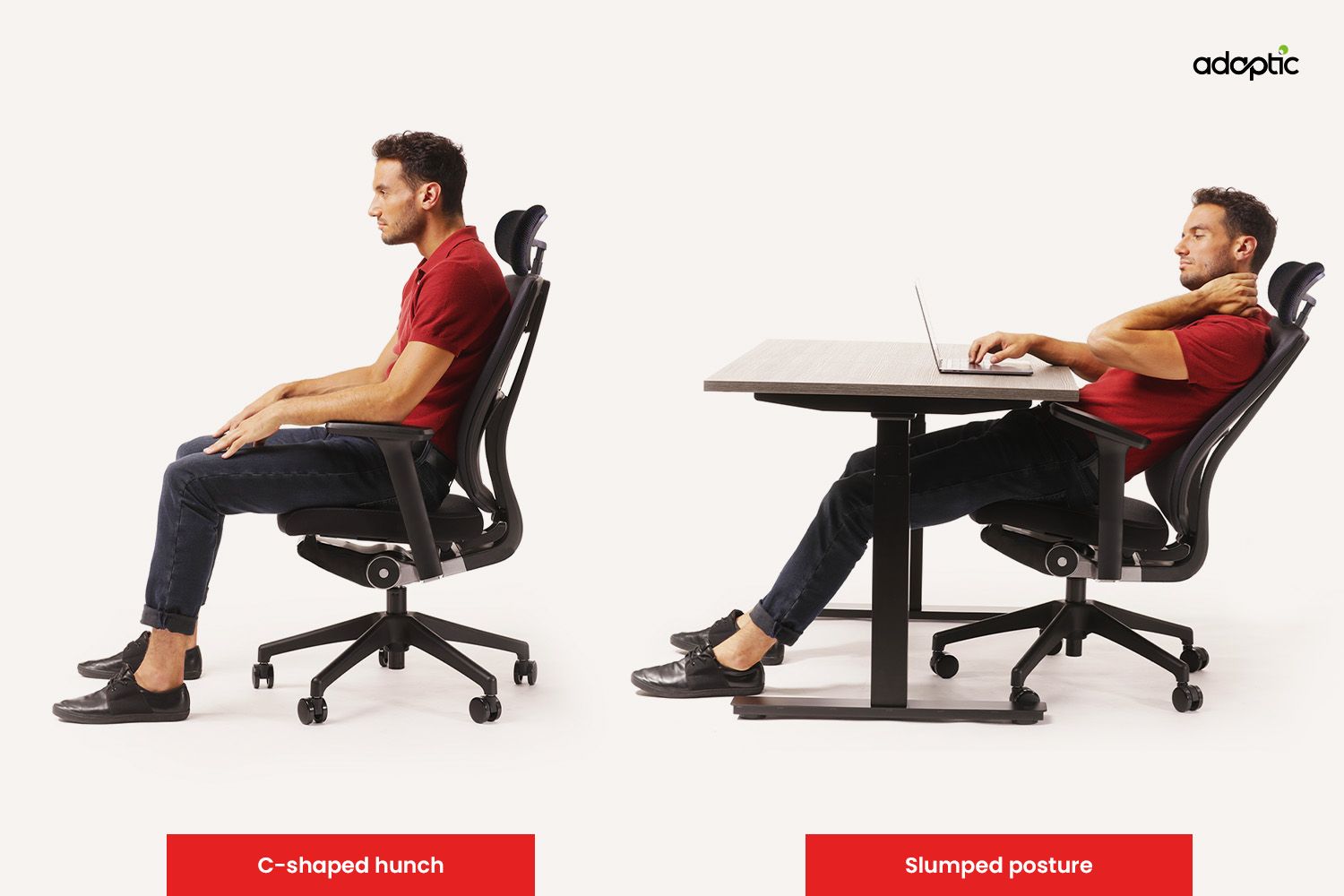
Improper Posture Was Found in 61% of Ergonomic Chair Users
The large difference between ergonomic and therapeutic chairs surprised even us, who have mostly expected it. See below:
Adaptic Therapeutic Chair:
| Seated posture | No. of users | Percent |
| STRAIGHT back free (proper) | 11–16 | 28.5% |
| STRAIGHT back resting (proper) | 31–33 | 64% |
| BENT C-shape (improper) | 1–7 | 7.5% |
| COLLAPSED into seat (improper) | 0 | 0% |
Ergonomic Chair:
| Seated posture | No. of users | Percent |
| STRAIGHT back free (proper) | 1–3 | 4% |
| STRAIGHT back resting (proper) | 16–20 | 35.5% |
| BENT C-shape (improper) | 20–21 | 41% |
| COLLAPSED into seat (improper) | 8–11 | 19.5% |
Note: Ranges show the minimum and maximum number of patients seen in a particular posture at individual check-ins.
Adaptic chairs’ results mostly confirmed our expectations: In the therapeutic chair group, 28% sat straight with back free and 64% sat straight with back resting, for a total of 92% of patients maintaining a straight posture. This posture is essential to stabilize the torso and prevent back pain.
Ergonomic chairs did not do nearly as well, with only 39% of patients sitting in either straight posture. The remaining 61% sat in postures that are unhealthy, affecting the spine negatively in various ways, including asymmetrical loading and muscle imbalance.
Deep core stabilizing muscles do not work well in this posture, failing to relieve spinal load and lumbar pressure, increasing the likelihood of lower back and neck pain.
Ergonomic Chairs Are Passive and Therefore Not Enough
You may be thinking: Ergonomic chairs are specifically made to be “healthy”, so why don’t people sit properly on them? Unfortunately, it’s not that easy. Ergonomic chairs are a passive benefit at best – they can arrange your body in the proper posture when you sit down, but that’s it. These chairs have no way to allow your muscles to work while seated, and the static position eventually tires them out. The body then collapses to the posture that takes the least energy to maintain against gravity, which is the usual slump with head thrust forward.
When sitting on a tilting-seat chair, on the other hand, the seat always slightly wobbles under you, though not enough to distract from work once you’re used to it. Your head and torso remain well-aligned. The small motions activate and exercise deep core stabilizing muscles, which then actively support the spine and allow you to maintain a straight posture.
These motions also improve nutrient flow to spinal discs, keeping them healthy.
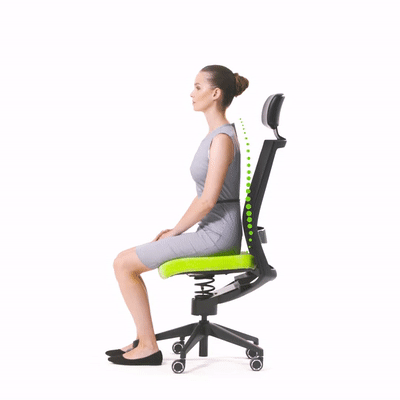
Treat Yourself to Healthy Sitting
What is the study’s conclusion, then? Adaptic therapeutic chairs are effective in relieving back pain, even more so than rehabilitation exercises. Treat your spine to a little action every day, even when you’re sitting.

Adaptic group of authors
We are the Adaptic in-house healthy sitting team. We develop new Adaptic therapeutic products and help customers choose the right one for them.
Other articlesRelated Products
Still scrolling? Keep reading!


